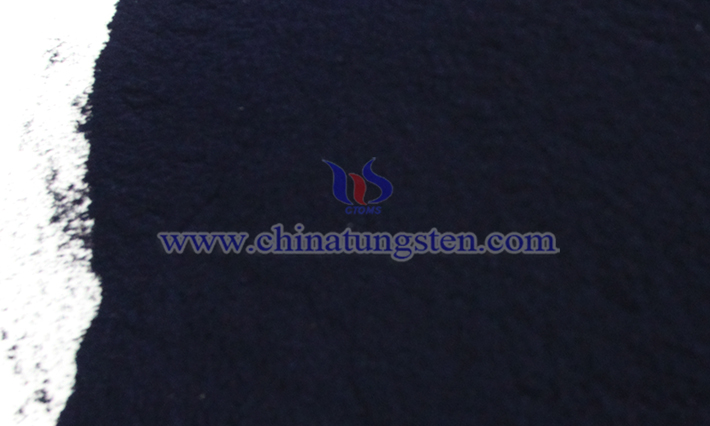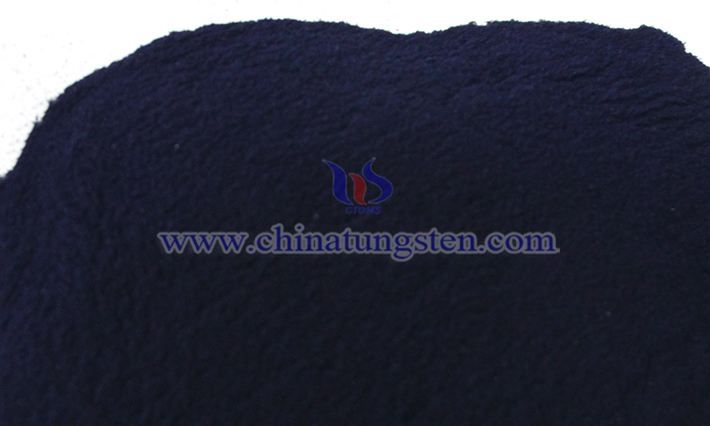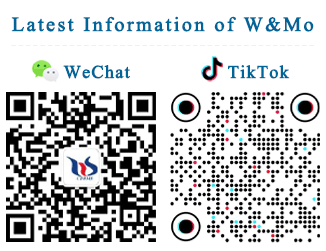What Are the Characteristics of Violet Tungsten Oxide?
- Details
- Category: Tungsten Information
- Published on Thursday, 13 February 2025 18:56
Violet Tungsten Oxide (VTO) is a unique tungsten oxide with the chemical formula W18O49 or WO2.72. The characteristics of Violet Tungsten Oxide are briefly described below:

I. Appearance and Morphology: Violet tungsten oxide appears as purple or blue-purple, in the form of fine crystalline powder. Its particle morphology is unique, with each large particle consisting of loose agglomerates of needle-like or rod-like grains, and the interior of these agglomerates is rich in cracks.
II. Density: The density of violet tungsten oxide ranges between 7.724-7.989g/cm³.
III. Bulk Density: Its bulk density is approximately 2.3-2.8g/cm³, with specific values varying depending on the production process and particle size.
IV. Specific Surface Area: Violet tungsten oxide has a large specific surface area, closely related to its unique crystal structure and particle morphology.
V. Solubility: Violet tungsten oxide is soluble in ammonia water and alkaline solutions but insoluble in water, alcohol, and most acidic solutions.
VI. Oxidation and Reduction Properties: In an oxidizing atmosphere, WO2.72 is easily oxidized to higher-valent tungsten trioxide (WO3). In a reducing atmosphere, WO2.72 is easily reduced to lower-valent tungsten dioxide (WO2) or tungsten metal powder (W).
VII. Electrochromic Properties: Under an applied electric field, the optical properties (such as reflectivity, transmittance, and absorptivity) of violet tungsten oxide undergo stable and reversible color changes, making it widely applicable in the field of electrochromic devices.
VIII. Gas Sensitivity: Violet tungsten oxide exhibits good gas sensitivity, with significant changes in properties such as resistance when exposed to certain gases (e.g., ethanol, methane, hydrogen).
IX. Catalytic Activity: Its fine particles, abundant internal cracks, and high concentration of oxygen defects endow violet tungsten oxide with excellent catalytic activity, enabling it to participate in and accelerate certain chemical reactions. Its catalytic activity can be optimized by adjusting reaction conditions (such as temperature, pressure, illumination).

X. Application Fields:
Production of Tungsten Metal and Tungsten Carbide Powders: Violet tungsten oxide is an important raw material for obtaining tungsten metal powder, which can be reduced to tungsten metal powder through deoxidation reactions. These tungsten powders have broad applications in fields such as cemented carbide, electronic materials, and chemical catalysts. It can also serve as a raw material for preparing tungsten carbide powders.
Manufacturing of Ultra-fine and Nanoscale Tungsten Powders: The reduction process of violet tungsten oxide can generate finely grained, uniformly distributed tungsten powders. These ultra-fine and nanoscale tungsten powders have potential applications in fields such as materials science, electronics, and biomedicine.
Anode Material for Lithium Batteries: Due to its high theoretical specific capacity, fast ion transport rate, and large porosity, violet tungsten oxide is suitable for use as an anode material in lithium batteries.
Smart Windows: Violet tungsten oxide, with good electrochromic and photochromic effects and strong electromagnetic wave absorption, is an important raw material for preparing smart windows.
Near-infrared Photothermal Therapeutic Agents: Violet tungsten oxide has strong absorption capacity in the near-infrared region and can be used to prepare near-infrared photothermal therapeutic agents.
Photocatalysts: Due to its abundant internal cracks and high concentration of oxygen defects, violet tungsten oxide exhibits high solar energy utilization and good photocatalytic performance, making it suitable as a photocatalyst.
Shielding Materials: As a shielding material, violet tungsten oxide offers excellent shielding effects, good air permeability, and ease of cleaning.
Fuel Cell Supports: Violet tungsten oxide can partially replace carbon as a support material for fuel cells, effectively improving the corrosion resistance of catalysts and extending product life.
Gas Sensor Elements: Due to its novel acoustic properties and high sensitivity, violet tungsten oxide can be used to make gas sensor elements such as nitrogen dioxide and hydrogen sulfide sensors.
- Chinatungsten Online: www.tungsten-oxide.com
- CTIA GROUP LTD: en.ctia.group
- Tungsten News & Price: www.ctia.com.cn
- Molybdenum News & Price: news.molybdenum.com.cn
- Tel.: 86 592 5129696; Email: sales@chinatungsten.com



 sales@chinatungsten.com
sales@chinatungsten.com